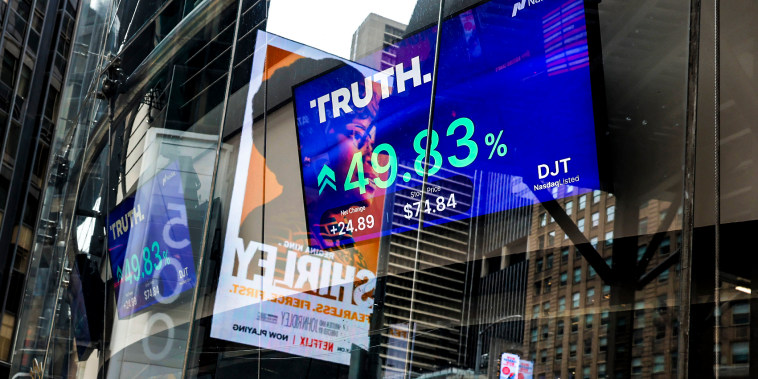In a surprising turn of events, media stocks controlled by former President Donald Trump have experienced a significant drop in value, resulting in billions of dollars of lost market capitalization. The repercussions of Trump’s foray into media have reverberated through the financial world, leaving investors and industry experts to ponder the implications of this sudden downturn.
The decline in the value of Trump-owned media shares has caught many off guard, especially considering the high expectations that were initially set for these companies. Trump Media & Technology Group (TMTG) and Digital World Acquisition Corp. (DWAC) were poised to revolutionize the media landscape with ambitious plans for a social media platform and a news network. However, the recent market performance of these stocks has cast doubts on the viability of these ventures.
One of the key factors contributing to the decline in Trump media shares is the lack of concrete developments and deliverables from the companies. Despite the initial hype surrounding the launch of TRUTH Social, the social media platform backed by TMTG, users and investors have yet to see a full-fledged rollout of the platform. This delay has eroded confidence in the company’s ability to execute its vision effectively.
Additionally, controversies surrounding Trump and his businesses have further dampened investor sentiment towards Trump media shares. Trump’s ongoing legal battles and political controversies have put his media ventures under intense scrutiny, raising concerns about the long-term viability and stability of these companies. This negative association with Trump himself has likely contributed to the decline in market value of his media holdings.
Furthermore, the broader market conditions and competition within the media industry have also played a role in the poor performance of Trump media shares. The media landscape is highly competitive, with established players constantly innovating and adapting to changing consumer preferences. Trump’s entry into this crowded field has faced stiff competition and challenges, making it difficult for his media ventures to gain a strong foothold in the market.
Looking ahead, the future of Trump media shares remains uncertain. While there is still potential for a turnaround, the companies will need to address the underlying issues that have led to the recent decline in value. This includes delivering on their promises, improving transparency and governance, and building a strong brand that can attract users and investors alike.
In conclusion, the recent drop in Trump media shares serves as a cautionary tale for investors and entrepreneurs alike. It highlights the importance of careful planning, execution, and management in the highly competitive and volatile media industry. As Trump’s media ventures navigate these challenges, only time will tell whether they can overcome the current setbacks and emerge as successful players in the ever-evolving media landscape.
